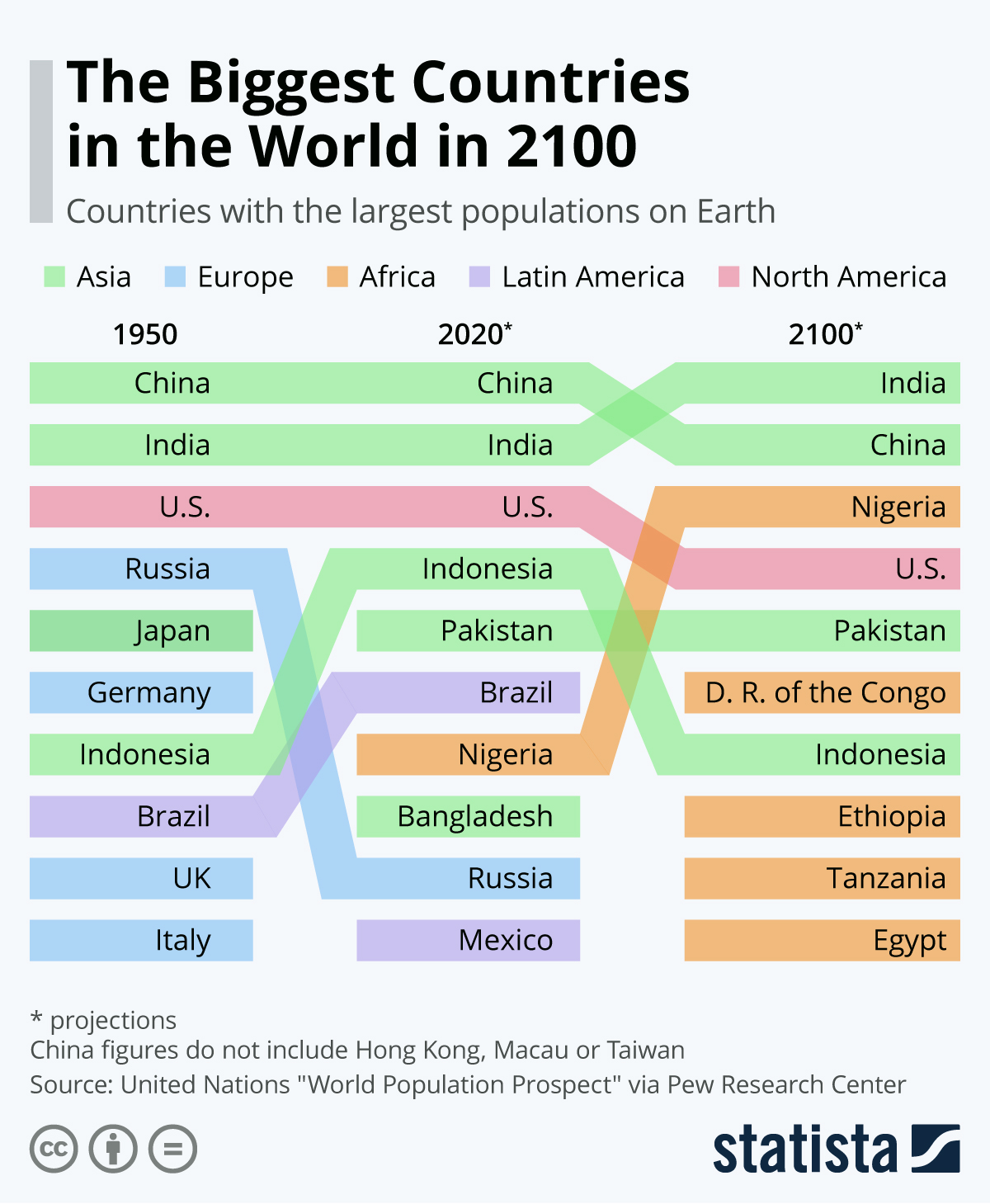In the 21st century so far, populous countries and strong population growth were most often associated with Asia – but this view of the world will have to change in the future, data by the United Nations and Pew Research Center shows.
While in 2020, five out of the ten most populous countries in the world were located in Asia, the picture will look different in 2100, when five African countries – Nigeria, Ethiopia, Tanzania, Egypt and the Democratic Republic of the Congo – will be among the world’s ten largest. While some Asian countries will continue to grow, they will do so at a lower rate and will be surpassed in population by African countries exhibiting faster growth. Others, like China and Bangladesh, are actually expected to shrink until 2100, mainly a result of a higher standard of living and education that has already begun to lower birth rates.
In 1950, four European countries were still among the world’s largest. That number will have decreased to one in 2020 and none in 2100.
The number of children born worldwide is already decreasing, but at currently 2.5 children born per woman, the world population is still growing. UN population researchers found that if the global fertility rate kept dropping at the rate it currently is, it would reach 1.9 children per woman in 2100, at which point the world population would actually be decreasing.
While in 2020, five out of the ten most populous countries in the world were located in Asia, the picture will look different in 2100, when five African countries – Nigeria, Ethiopia, Tanzania, Egypt and the Democratic Republic of the Congo – will be among the world’s ten largest. While some Asian countries will continue to grow, they will do so at a lower rate and will be surpassed in population by African countries exhibiting faster growth. Others, like China and Bangladesh, are actually expected to shrink until 2100, mainly a result of a higher standard of living and education that has already begun to lower birth rates.
In 1950, four European countries were still among the world’s largest. That number will have decreased to one in 2020 and none in 2100.
The number of children born worldwide is already decreasing, but at currently 2.5 children born per woman, the world population is still growing. UN population researchers found that if the global fertility rate kept dropping at the rate it currently is, it would reach 1.9 children per woman in 2100, at which point the world population would actually be decreasing.

1 comment:
Жаль, не доживу, любопытно было бы посмотреть на Нигерию
Post a Comment